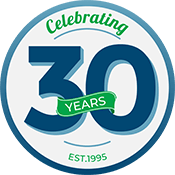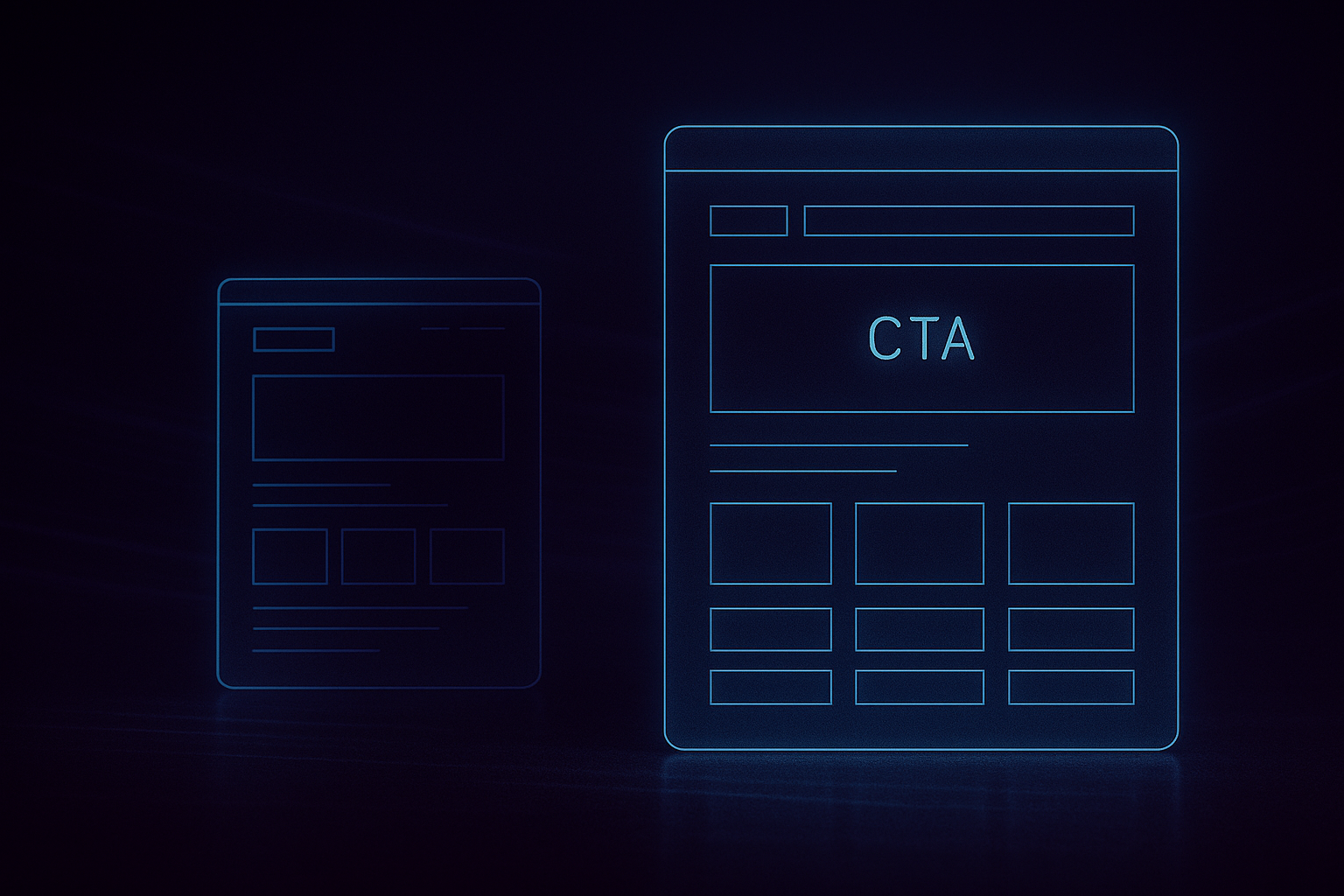
 STRATEGY CALL
STRATEGY CALL
When most Edmonton businesses think about getting a new website, they often focus on making it look great. While visual appeal certainly matters, there's a fundamental difference between websites designed to impress and marketing websites built to convert visitors into customers. Traditional web design prioritises aesthetics and brand presentation, but conversion-focused marketing websites are engineered with one primary goal in mind: turning your online traffic into measurable business results. If you're ready to transform your website from a digital brochure into a powerful lead generation tool, Smart WSI Marketing can help you build a conversion optimized website that delivers real ROI for your Edmonton business.Call us today for a consultation.
Conversion-focused marketing websites prioritize measurable results over aesthetics alone. Key differences include:

The fundamental difference between traditional web design and marketing websites lies in their core philosophy. While traditional designs focus on creating visually stunning presentations, Edmonton marketing websites are built around a performance-first mentality that prioritises user action over aesthetic appeal.
Traditional web design typically starts with questions like "What colours represent our brand?" or "How can we make this look more modern?" In contrast, custom marketing websites begin with performance-driven questions: "What action do we want visitors to take?" and "How can we guide users toward conversion?" This shift in thinking influences every design decision, from layout choices to colour psychology, ensuring that each element serves a specific purpose in the conversion funnel.
Performance-focused web design doesn't ignore aesthetics entirely, but it subordinates visual elements to functionality. Every design choice is evaluated based on its potential impact on conversion rates, user engagement, and business objectives. This approach often results in cleaner, more focused designs that eliminate distractions and guide users toward desired actions.
Traditional design approaches often fail local business marketing websites Edmonton because they're built around outdated assumptions about user behaviour and business goals. Many traditional websites are essentially digital brochures that provide information but don't actively encourage user engagement or conversion. They may look impressive in a portfolio, but they don't generate leads, sales, or measurable business growth.
Local businesses need websites that work harder for their investment. Traditional design approaches typically involve creating a website once and leaving it largely unchanged for years, missing opportunities to optimise performance based on real user data. This static approach doesn't account for changing user preferences, market conditions, or business goals that evolve over time.
Conversion optimized websites operate from an ROI-driven mindset that treats every design element as an investment that should generate returns. This approach means that design decisions are made based on data rather than personal preferences or industry trends. Elements that don't contribute to conversion goals are eliminated or redesigned, while high-performing components are emphasised and optimised further.
This mindset extends beyond the initial design phase into ongoing optimisation and improvement. Rather than viewing the website as a finished product, conversion optimized websites are treated as dynamic tools that require continuous refinement based on performance data and user feedback.
Success in conversion-focused design requires tracking the right metrics and using data to guide design decisions. Unlike traditional websites that might measure success through vanity metrics like page views or time on site, marketing websites focus on metrics that directly correlate with business objectives.
Custom marketing website success is measured through conversion rate optimisation metrics that provide insight into user behaviour and business impact. These include conversion rates for different traffic sources, cost per acquisition across various marketing channels, and lifetime value of customers acquired through the website. Form completion rates, click-through rates on calls-to-action, and bounce rates from key landing pages provide actionable data for design improvements.
The key is focusing on metrics that align with specific business goals rather than generic web analytics. For a local service business, phone calls generated through the website might be more valuable than email signups, while an e-commerce site would prioritise shopping cart completion rates and average order value. Understanding which metrics matter most for your Edmonton business ensures that design optimisations focus on improvements that drive real results.
Professional marketing website design and development teams in Edmonton implement comprehensive tracking systems that monitor user behaviour across the entire customer journey. This includes setting up goal tracking in analytics platforms, implementing heat mapping tools to understand how users interact with page elements, and creating custom dashboards that display key performance indicators in real-time.
Advanced tracking goes beyond basic analytics to include user session recordings, conversion funnel analysis, and attribution modeling that shows which marketing channels and website elements contribute most to conversions. This data provides the foundation for making informed design decisions based on actual user behaviour rather than assumptions or best practices.
Effective analytics setup for marketing websites involves creating a measurement framework that aligns with business objectives and provides actionable insights for design improvements. This includes defining conversion goals, setting up event tracking for key user interactions, and implementing attribution models that show the complete customer journey from initial visit to conversion.
The analytics setup should also include regular reporting and analysis processes that identify trends, opportunities, and areas for improvement. This might involve weekly performance reviews, monthly conversion analysis, and quarterly strategic assessments that inform ongoing optimisation efforts and future design decisions.

Interactive elements in conversion optimized websites serve specific strategic purposes rather than simply adding visual interest or engagement. Every interactive component is designed to guide users toward conversion while providing value and improving the user experience.
Purpose-driven calls-to-action differ significantly from generic design elements in their specificity, placement, and psychological impact. Rather than using generic phrases like "Learn More" or "Click Here," Edmonton conversion optimized websites employ CTAs that clearly communicate value and create urgency. These might include "Get Your Free Edmonton Marketing Assessment" or "Schedule Your Consultation Today."
The placement of these CTAs is strategic, appearing at moments when users are most likely to take action based on their position in the content and their demonstrated interest level. This approach contrasts with traditional design that might place CTAs based on visual balance or aesthetic considerations rather than user psychology and conversion optimisation principles.
User flow optimisation for local Edmonton business marketing websites involves creating clear, logical pathways that guide visitors from their initial landing point to conversion with minimal friction or distraction. This requires understanding different user personas, their motivations, and the information they need at each stage of their decision-making process.
Effective user flow design eliminates unnecessary steps, reduces cognitive load, and provides clear navigation options that keep users moving toward conversion goals. This might involve creating separate pathways for different types of visitors, such as first-time browsers versus returning customers, or designing flows that accommodate different levels of purchase readiness.
Mobile-first interactive design recognises that the majority of Edmonton users access websites through mobile devices and designs interactive elements specifically for touch interfaces and smaller screens. This approach ensures that CTAs, forms, and navigation elements work effectively on mobile devices rather than being afterthoughts adapted from desktop designs.
Mobile-first design for Edmonton markets also considers local user behaviour patterns, such as users searching for local services while on the go or comparing options during their commute. Interactive elements are designed to accommodate these usage patterns while maintaining conversion effectiveness across all device types.

User testing provides the empirical foundation for design decisions in marketing websites development, replacing guesswork and assumptions with actual user behaviour data. This systematic approach to understanding user preferences and behaviours enables continuous improvement and optimisation based on real-world performance.
A/B testing strategies for Edmonton custom marketing websites involve systematic testing of design elements, content variations, and user experience modifications to identify the most effective approaches for driving conversions. This might include testing different headline variations, CTA button colours and text, form lengths and field requirements, or page layouts and content organisation.
Effective A/B testing requires proper statistical methodology, adequate sample sizes, and testing periods that account for traffic variations and seasonal factors. The goal is to identify design changes that produce statistically significant improvements in conversion rates and user engagement metrics.
Heat mapping and user behaviour analysis tools provide visual representations of how users interact with marketing websites, showing where they click, how far they scroll, and which elements capture their attention. This data reveals patterns that might not be apparent from traditional analytics, such as users attempting to click on non-clickable elements or abandoning forms at specific fields.
These tools enable marketing website design and development teams to identify usability issues, optimise page layouts, and improve conversion paths based on actual user behaviour rather than assumptions about how users should interact with the site.
Continuous testing cycles in marketing website design and development ensure that optimisation is an ongoing process rather than a one-time effort. This involves implementing regular testing schedules, maintaining testing calendars that coordinate with marketing campaigns and business cycles, and developing systematic approaches for implementing and measuring design changes.
The continuous testing approach recognises that user behaviour, market conditions, and business objectives evolve over time, requiring ongoing adaptation and optimisation to maintain peak performance. This contrasts with traditional design approaches that treat websites as static assets requiring periodic overhauls rather than dynamic tools requiring continuous refinement.
Data-driven design evolution represents a fundamental shift from intuition-based design decisions to systematic, evidence-based improvements that respond to actual user behaviour and business performance metrics. This approach ensures that local Edmonton business marketing websites continue to improve and adapt over time.
Using analytics to guide design iterations involves establishing systematic processes for reviewing performance data, identifying improvement opportunities, and implementing design changes based on empirical evidence rather than personal preferences or industry trends. This includes regular analysis of conversion funnels, user flow patterns, and performance metrics that inform specific design modifications.
The process requires establishing baseline measurements, implementing changes systematically, and measuring results to determine the effectiveness of design modifications. This data-driven approach ensures that design evolution is directed toward improvements that actually enhance business performance rather than changes that simply look different or follow current design trends.
Responsive design changes based on conversion data involve modifying website layouts, content presentation, and interactive elements based on how different user segments interact with the site across various devices and contexts. This might involve adjusting mobile layouts based on touch interaction patterns, modifying content hierarchy based on reading behaviour analysis, or optimising form designs based on completion rate data.
This approach goes beyond traditional responsive design that simply adapts layouts for different screen sizes, instead using conversion data to understand how design changes impact user behaviour and business results across different devices and usage contexts.
Edmonton conversion optimized websites adapt over time through systematic monitoring, testing, and improvement processes that respond to changing user expectations, market conditions, and business objectives. This evolution is guided by performance data and user feedback rather than arbitrary design trends or personal preferences.
The adaptation process includes regular performance audits, competitive analysis, user experience assessments, and strategic planning sessions that identify opportunities for improvement and guide long-term development priorities. This ensures that the website continues to serve business objectives effectively while adapting to changing market conditions and user expectations.
Building an effective conversion-focused marketing website strategy requires careful planning, appropriate resource allocation, and realistic expectations about the development process and ongoing optimisation requirements. This strategic approach ensures that the final product aligns with business objectives and delivers measurable results.
Choosing the right team for Edmonton marketing website design and development requires evaluating candidates based on their experience with conversion optimisation, understanding of local markets, and ability to implement data-driven design processes. The ideal team combines technical expertise with marketing knowledge and a proven track record of delivering results for similar businesses.
Key considerations include the team's experience with analytics implementation, A/B testing methodologies, conversion rate optimisation techniques, and ongoing performance monitoring. The team should also demonstrate understanding of your specific industry and target market, ensuring that design decisions align with your customers' preferences and behaviour patterns.
Budget allocation for conversion optimized websites should be viewed as an investment in measurable business growth rather than a traditional design expense. While the upfront costs may be higher than traditional website design, the ongoing optimisation and performance improvements typically generate returns that far exceed the initial investment.
Budget considerations should include not only the initial design and development costs but also ongoing optimisation, testing, and performance monitoring expenses. This long-term investment approach ensures that the website continues to improve and adapt over time, generating increasing returns as conversion rates improve and user experience optimisations compound.
Timeline expectations for custom marketing websites projects should account for the research, testing, and optimisation phases that differentiate conversion-focused development from traditional design projects. Initial development may take longer due to the additional research and strategic planning required, but the long-term benefits justify the extended timeline.
The development process typically includes discovery and research phases, user experience design and testing, technical development and implementation, and initial optimisation and refinement periods. Ongoing optimisation should be viewed as a continuous process rather than a project with a defined end date, ensuring that the website continues to improve and adapt over time.
Conversion-focused marketing websites represent a fundamental shift from traditional web design approaches:

The difference between traditional web design and conversion-focused marketing websites represents a fundamental shift in how businesses approach their online presence. While traditional designs prioritise visual appeal and brand presentation, Edmonton marketing websites focus on measurable business results through data-driven design, continuous optimisation, and strategic user experience improvements.
For Edmonton businesses ready to transform their websites from digital brochures into powerful conversion tools, the investment in conversion optimized websites delivers measurable returns through improved lead generation, higher conversion rates, and better user engagement. The key is working with experienced marketing website design and development professionals who understand both the technical requirements and strategic considerations necessary for success.
Ready to discover how a conversion-focused marketing website can transform your Edmonton business? Smart WSI Marketing specialises in creating custom marketing websites that deliver real results for local businesses. Contact us today to learn how our data-driven approach to marketing website design and development can help you turn more visitors into customers and achieve your business growth objectives.



